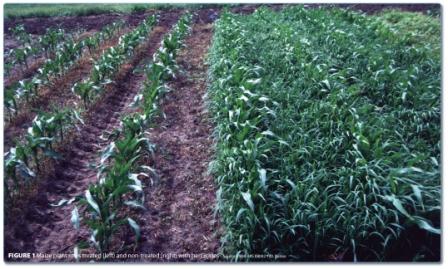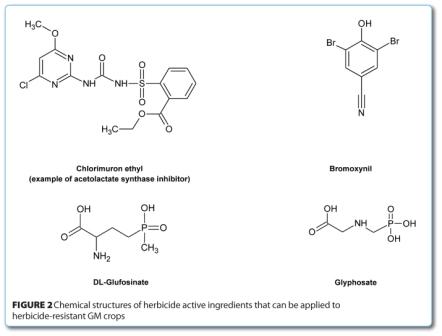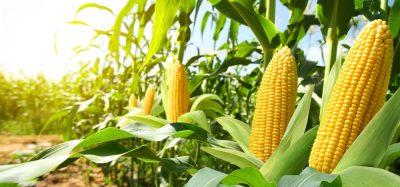Herbicide residues in genetically modified, herbicide-resistant crops
- Like
- Digg
- Del
- Tumblr
- VKontakte
- Buffer
- Love This
- Odnoklassniki
- Meneame
- Blogger
- Amazon
- Yahoo Mail
- Gmail
- AOL
- Newsvine
- HackerNews
- Evernote
- MySpace
- Mail.ru
- Viadeo
- Line
- Comments
- Yummly
- SMS
- Viber
- Telegram
- Subscribe
- Skype
- Facebook Messenger
- Kakao
- LiveJournal
- Yammer
- Edgar
- Fintel
- Mix
- Instapaper
- Copy Link
Posted: 1 May 2012 | Gijs A Kleter, RIKILT; John B Unsworth, Private Consultant and Caroline A Harris, Exponent International | No comments yet
Global agriculture has witnessed a continuously increasing adoption of genetically modified (GM) crops, both in terms of the area covered with these crops and the number of countries where these crops are grown. In 2011, the total worldwide acreage of these crops amounted to 160 million hectares, with the top 10 countries growing them located in the Americas (USA, Canada, Brazil, Argentina, Paraguay, Uruguay), Asia (India, China, Pakistan), and South Africa. The most popular GM crops are major commodity crops, in particular soybean, maize, cotton and canola. The major traits that have been introduced into these crops through genetic modification are herbicide resistance and insect resistance1.
A previous article discussed the internationally harmonised principles for the safety assessment of GM foods, which commonly has to be carried out before these foods can be allowed onto the market in many nations2. One of the issues mentioned then but not elaborated (because it falls under the scope of the parallel regulation of pesticides) is the potential for the new or altered presence of pesticide residues in GM crops. In this article, we highlight the issues surrounding the presence of residues of herbicide active ingredients and their metabolites in herbicideresistant GM crops.
Herbicides are pesticides that contain active ingredients that are toxic to some types of plant, for which reason they can be used to combat weeds, which are non-crop plants growing in crop fields.
Global agriculture has witnessed a continuously increasing adoption of genetically modified (GM) crops, both in terms of the area covered with these crops and the number of countries where these crops are grown. In 2011, the total worldwide acreage of these crops amounted to 160 million hectares, with the top 10 countries growing them located in the Americas (USA, Canada, Brazil, Argentina, Paraguay, Uruguay), Asia (India, China, Pakistan), and South Africa. The most popular GM crops are major commodity crops, in particular soybean, maize, cotton and canola. The major traits that have been introduced into these crops through genetic modification are herbicide resistance and insect resistance1. A previous article discussed the internationally harmonised principles for the safety assessment of GM foods, which commonly has to be carried out before these foods can be allowed onto the market in many nations2. One of the issues mentioned then but not elaborated (because it falls under the scope of the parallel regulation of pesticides) is the potential for the new or altered presence of pesticide residues in GM crops. In this article, we highlight the issues surrounding the presence of residues of herbicide active ingredients and their metabolites in herbicideresistant GM crops. Herbicides are pesticides that contain active ingredients that are toxic to some types of plant, for which reason they can be used to combat weeds, which are non-crop plants growing in crop fields.
Global agriculture has witnessed a continuously increasing adoption of genetically modified (GM) crops, both in terms of the area covered with these crops and the number of countries where these crops are grown. In 2011, the total worldwide acreage of these crops amounted to 160 million hectares, with the top 10 countries growing them located in the Americas (USA, Canada, Brazil, Argentina, Paraguay, Uruguay), Asia (India, China, Pakistan), and South Africa. The most popular GM crops are major commodity crops, in particular soybean, maize, cotton and canola. The major traits that have been introduced into these crops through genetic modification are herbicide resistance and insect resistance1.
A previous article discussed the internationally harmonised principles for the safety assessment of GM foods, which commonly has to be carried out before these foods can be allowed onto the market in many nations2. One of the issues mentioned then but not elaborated (because it falls under the scope of the parallel regulation of pesticides) is the potential for the new or altered presence of pesticide residues in GM crops. In this article, we highlight the issues surrounding the presence of residues of herbicide active ingredients and their metabolites in herbicideresistant GM crops.
Herbicides are pesticides that contain active ingredients that are toxic to some types of plant, for which reason they can be used to combat weeds, which are non-crop plants growing in crop fields. These cause a nuisance to the grower, for example by competing with the crop for nutrients and sunlight, thereby depressing crop growth and yield, and by contaminating the harvest, such as the commingling of weed seed with crop seed (Figure 1).


Herbicide resistance allows for the application of herbicides directly over the crop without having to spray the herbicide either in a directed fashion (such as between crop rows) or within a given time window so as to avoid contact with non-resistant crop plants which would otherwise be damaged or killed. It may also replace the need for the mechanical removal of the weeds, for example, by ploughing, harrowing, hoeing or manual removal, or the use of residual herbicides that are retained by the soil and potentially taken up by crops subsequently grown there. Herbicide resistance therefore offers the potential to reduce the labour required and increase the flexibility of weed management options, particularly if the crop resistance is towards broad-spectrum herbicides that control a wide range of weed species. Crops may be naturally resistant to some types of herbicides but not to others, hence for the latter case, genetic modification through recombinant DNA techniques may be used to render these crops resistant, while in a number of cases, mutation breeding has also been successfully applied.
In genetically modified crops, resistance to each of the four major categories of herbicide active ingredients has been introduced, namely against bromoxynil, glufosinate, glyphosate and the family of acetolactate synthase inhibitors (e.g. sulfonylureas), with each category of active ingredient having a different mode of toxic action on plants. Two general strategies for obtaining resistance can be discerned. If the target of the herbicide active ingredient is a plant enzyme in which the enzymatic activity is inhibited by binding this active ingredient, a possible strategy is to introduce a gene encoding an herbicide-insensitive version of this particular enzyme. This new, insensitive version of the enzyme can be either a mutant of the native plant enzyme or an analogue from another organism. For example, the most predominant GM crop on the market is a glyphosate-resistant soybean which contains a glyphosate-insensitive version of 5-enolpyruvyl shikimate 3-phosphate synthase, a key enzyme in the biosynthesis of aromatic compounds, such as aromatic amino acids and plant phenolic compounds. In this case, the enzyme introduced through genetic modification naturally occurs in a species of soil bacteria. Another example is mutants of the acetolactate synthase enzyme that are not sensitive towards certain inhibitors of this enzyme used as active ingredients. The second strategy is to introduce gene encoding for the production of enzymes that can chemically transform the herbicide active ingredients into less- or non-toxic forms. Examples of such enzymes are phosphinothricin acetyltransferase enzymes, which have the capacity to metabolise the active ingredient glufosinate into N-acetyl glufosinate. Other examples are the enzymes bromoxynil nitrilase and glyphosate N-acetyltransferase, which chemically convert the active ingredients bromoxynil and glyphosate, respectively3.
It can be envisaged that herbicide resis – tance may lead to different levels of residues of herbicide active ingredients in the tissues and products of the crop plants protected with the application of the particular herbicide, as well as to different types of chemical compounds (metabolites) formed from the active ingredient by the crop plant after uptake. This may relate to the altered application pattern of the herbicide to the GM crop as compared to its conventional non-GM counterpart (i.e. over-thetop application, different application rates and timing), as well as to the fact that some GM plants contain newly introduced enzymes that transform the herbicide active ingredients into metabolites that either do not occur in the non- GM plant or which do occur but at different levels after treatment.
Herbicides are a class of pesticide and therefore have to be registered for specific uses under the pesticide regulations in a given nation. This specific use pertains to the use of a given herbicide formulation on a particular crop plant, with the number of applications carried out at given intervals and growth stages according to ‘good agricultural practice’. These conditions of herbicide use have to be specified for the application and will also be part of the recommended use of the herbicide, which, among others, has to be described on the label of the commercialised product. For the safety of herbicide formulations consisting of a mixture of herbicide active ingredients with other ingredients (e.g. surfactants, anti-foaming agents, solvents, buffering salts, stabilisers), two different issues are commonly assessed during the registration, namely 1) the safety of the active ingredient (independent of formulation and specific crop applications) and 2) the safety of the formulation being applied to a given crop plant under particular regimes. For each croppesticide combination, registration has to be obtained before the product can be legally marketed. The safety of a herbicide covers different sub-topics, including the safety of workers handling and using the herbicide, the safety of the herbicide to organisms in the environment, and the safety of residues in human food and animal products for consumers of these products.
In our research for a project of the Inter – national Union for Pure and Applied Chemistry (IUPAC), we focused on the issue of residues of herbicide active ingredients in food products derived from herbicide-resistant GM crops4. This research was aimed at reviewing the data available on the active ingredients of herbicides applied to commercialised herbicide-resistant GM crops, including:
- Mechanisms of resistance
- Presence of residues of herbicide active ingredients and their metabolites in the crop plant
- Levels of these residues
- Regulatory residue definitions and maxi – mum residue limits, and how these are affected by the introduction of herbicideresistant GM crops
The four herbicide classes mentioned above (i.e. acetolactate synthase inhibitors, bro – moxynil, glufosinate, glyphosate), to which commercialised GM crops have been rendered resistant, were considered in the research (Figure 2).


It is likely that this range will be extended in the near future with resistance to additional herbicide classes, pending the outcome of recent applications for marketing approval of these new herbicide-resistant GM crops.
Besides data available from the scientific literature, relevant information was also obtained from the assessments of herbicide active ingredients by the Codex Alimentarius Commission and by national governments. Codex Alimentarius is a global organisation emanating from a joint effort between the World Health Organisation and the Food and Agriculture Organisation of the United Nations. It sets standards for the quality and safety of food products, such as for the presence of residues of certain components in food, including pesticides and veterinary drugs. While these standards do not have a regulatory status per se, they serve as point of reference in trade conflicts over the safety of internationally traded foods as defined by the international SPS agreement on sanitary and phytosanitary standards, for the World Trade Organisation. On scientific matters of pesticide residues, the Codex Alimentarius Commission is advised by the Joint Meeting on Pesticide Residues (JMPR), which reviews the data on the safety of these residues, including their toxicity, behaviour in the crop plant (i.e. uptake, metabolism, residue formation), and the levels of residues. JMPR can therefore propose residue definitions, i.e. the compounds that have to be regulated based on their relevance for consumer safety, such as the active ingredient and toxicologically relevant metabolites. It also proposes maximum residue limits (MRLs) for residues of a particular pesticide in a given crop, based on the levels that can be achieved when good agricultural practice is followed. Whilst this level must be shown not to cause a risk to consumers, it is not an upper safe limit from a toxicological point of view. The MRL is commonly way below the toxi – cologically safe limit.
With regard to the question as to whether it should set separate standards for the residues of herbicides in products derived from herbicideresistant GM crops or not, the Codex Committee on Pesticide Residues (CCPR; the risk manage – ment body supporting the JMPR) concluded in 2001 that no separate maximum residue limits should be elaborated for GM crops besides those for conventional crops. This was based on the experience gained and the approaches followed in a number of member states towards the herbicides applied to herbicide-resistant GM crops. It was considered that the commodities derived from the GM crops would be mixed with those from non-resistant crop varieties. A single residue definition was applied to both types of crop, while this definition might have to be extended based on additional metabolites being formed from the herbicide active ingredient in the GM varieties of the same crop. In addition, the metabolism of the active ingredient has to be considered in-depth if this is expected to be different from that in the non-GM crop.
The Codex Alimentarius Commission has considered the residues of glyphosate and glufosinate as active ingredients of herbicides applied to herbicide-resistant GM crops. In addition, various national authorities have considered actetolactate synthase inhibitors and bromoxynil applied to GM crops that have been rendered resistant towards them, as well as specific combinations of glyphosate and glufosinate with crops not considered specifically by Codex. With regard to whether or not levels and profiles of residues are altered in these crops, no generalised conclusions can be inferred from the outcomes of these assessments given that they show no general trend but rather different outcomes on a case by case basis. The residue definition was changed in some but not all cases. Examples of this where additional metabolites were included are for bromoxynil in cotton due to metabolism to 3,5-dibromo-4-hydroxybenzoic acid by bromoxynil nitrilase, and glufosinate and glyphosate to N-acetylated derivatives of these compounds in GM crops expressing N-acetylase enzymes. In addition, no generalised inferences can be made on the level of residues in herbicide-resistant GM crops as compared to their non-GM counterparts to which the same herbicide is applied (while avoiding damage to the crop plant), depending on a number of factors, such as the stages (e.g. early versus late, pre-plant versus post-emergence versus preharvest) of herbicide application, translocation of the herbicide active ingredient to plant tissues after uptake, and the particular crop tissue or derived product regarded (e.g. oil versus seed bran). This explains why maximum residue limits had to be raised in a few, but not all, cases.
As noted above, the Codex Alimentarius Commission has not yet considered all possible herbicide – crop combinations that are possible for commercialised herbicide-resistant GM crops. We therefore recommend that inter national harmonisation of residue definitions and thresholds also be pursued for these combinations so as to prevent possible trade disruptions in future4.
Acknowledgement
The authors thank Dr E.J. Kok for her valuable comments to the manuscript of this article. Financial support from the International Union for Pure and Applied Chemistry and from the Dutch Ministry of Economics, Agriculture and Innovation (project number 7229601) is gratefully acknowledged.
References
1. James, C. (2012) Global Status of Commercialized Biotech/GM Crops: 2011 (ISAAA Brief 43-2010), Executive Summary. Ithaca NY, USA: International Service for the Acquisition of Agri-Biotech Applications. http://www.isaaa.org/resources/ publications/briefs/43/executivesummary/ default.asp
2. Kleter, G.A. (2009) Assessing the safety of genetically modified crops used for food and feed purposes. New Food, (1), 53-55
3. FAO (2011) Biosafety Resource Book, Annex A1.2:Herbicide Tolerance Genes. Rome, Italy: Food and Agriculture Organization of the United Nations. http://www.fao.org/docrep/014/i1905e/ i1905e00.htm
4. Kleter, G.A., Unsworth, J.B., Harris, C.A. (2011) The impact of altered herbicide residues in transgenic herbicide-resistant crops on standard setting for herbicide residues. Pest Management Science, 67(10), 1193-1210. doi:10.1002/ps.2128
About the authors
Dr Gijs A. Kleter is a natural scientist specialising in risk assessment of foods and animal feeds, in particular the safety of biotechnology-derived products and emerging risks. He is with RIKILT – Institute of Food Safety (www.rikilt.wur.nl), which is part of Wageningen University and Research Center in Wageningen, The Netherlands.
Dr John B. Unsworth is a chemist who has worked in the area of pesticide registration for many years, in particular in the areas of environmental chemistry, metabolism and residues. He is currently working as an independent consultant based in the UK.
Dr. Caroline A. Harris is a chemist who has been working in the area of pesticide residues and consumer risk assessments for many years. She is currently principal scientist at Exponent International Ltd. in the UK.
Issue
Related topics
Related organisations
Exponent, RIKILT – Institute of Food Safety, Wageningen University





